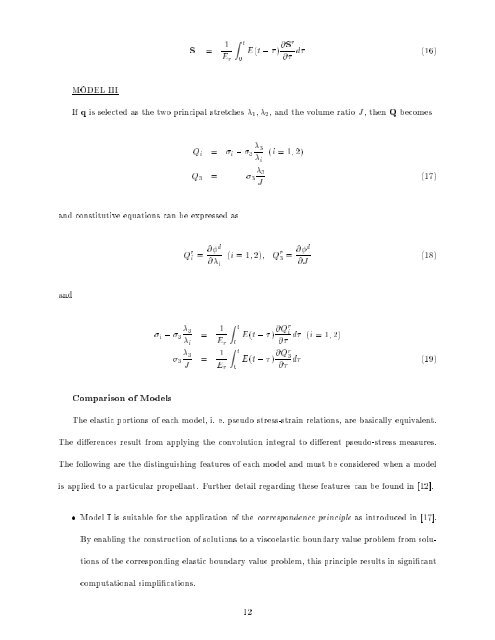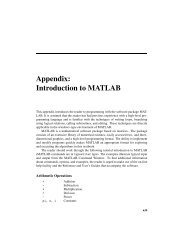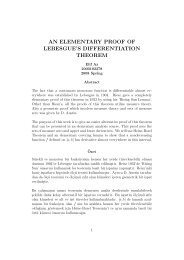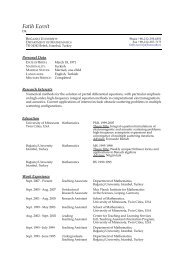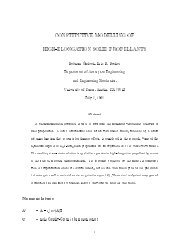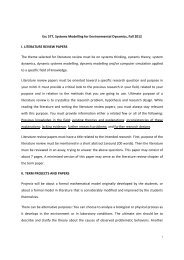CONSTITUTIVE EQUATIONS FOR SOLID PROPELLANTS
CONSTITUTIVE EQUATIONS FOR SOLID PROPELLANTS
CONSTITUTIVE EQUATIONS FOR SOLID PROPELLANTS
Create successful ePaper yourself
Turn your PDF publications into a flip-book with our unique Google optimized e-Paper software.
S = 1 E r<br />
Z<br />
t<br />
0<br />
E(t , ) @Sr<br />
d (16)<br />
@<br />
MODEL III<br />
If q is selected as the two principal stretches 1 ; 2 , and the volume ratio J, then Q becomes<br />
Q i = i , 3<br />
3<br />
i<br />
(i =1; 2)<br />
Q 3 = 3<br />
3<br />
J<br />
(17)<br />
and constitutive equations can be expressed as<br />
Q r i = @d (i =1; 2); Q r 3 = @d<br />
@ i @J<br />
(18)<br />
and<br />
i , 3<br />
3<br />
i<br />
= 1 E r<br />
Z<br />
3<br />
3<br />
J<br />
= 1 E r<br />
Z<br />
t<br />
0<br />
t<br />
0<br />
E(t , ) @Qr i<br />
@<br />
d (i =1; 2)<br />
E(t , ) @Qr 3<br />
d (19)<br />
@<br />
Comparison of Models<br />
The elastic portions of each model, i. e. pseudo stress-strain relations, are basically equivalent.<br />
The dierences result from applying the convolution integral to dierent pseudo-stress measures.<br />
The following are the distinguishing features of each model and must be considered when a model<br />
is applied to a particular propellant. Further detail regarding these features can be found in [12].<br />
Model I is suitable for the application of the correspondence principle as introduced in [17].<br />
By enabling the construction of solutions to a viscoelastic boundary value problem from solutions<br />
of the corresponding elastic boundary value problem, this principle results in signicant<br />
computational simplications.<br />
12


